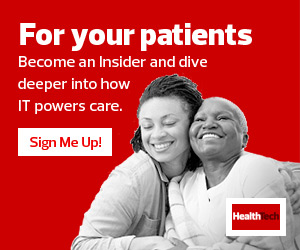Healthcare organizations that manage this flood of data effectively set themselves up to take advantage of valuable new capabilities. For example, data could also be mined for signals that would identify things such as new disease states, said Harry Glorikian, general partner at the investment firm Scientia Ventures.
Another benefit to improved data management is better communication between the information and the patient, so healthcare workers can influence patients to make changes in their behavior.
That’s why it’s important to think about data earlier in the process, Betten added.
“What you want to gather, what you want to do with it, where you’re going to go with it and what the outcomes are going to be,” he said. “As design people, we need to take that into account.”
The Importance of Design and Function
From the device manufacturer’s perspective, the most important consideration for data management is to listen to end users and give them the tools they need, said Pari Gaikwad, head of project management for digital health at the pharmaceutical company Sanofi.
“Second, when you think about the digital health solution, simplify your design,” Gaikwad said. “Third, when it comes to Software as a Medical Device, the design control recommendations by the FDA are not your enemy — they’re there to help you.”
It’s also important to remember that digital health tools are aids to help healthcare providers solve problems and meet needs, added Aghogho Ekpruke, digital health architect for healthcare solutions provider Baxter.
LEARN MORE: Find out the possibilities and pitfalls of wearable tech in healthcare.
“Data by itself is not very useful,” he said. “Device manufactures are trying collect and generate more meaningful data that helps to understand the health of the device and to better provide care of the patient.”
There’s always the risk, however, of collecting too much data or not having sufficient utilization of that data. “That’s something that needs to be kept in mind throughout the design and development process, and into the ways in which those products are maintained in the field,” Ekpruke said.
All stakeholders need to think about security first, he added, and make sure those data protection and privacy measures are built into the solutions up front.
“That needs to be brought into the design process,” Ekpruke said. “It’s a connected world, and that’s not going to change.”











